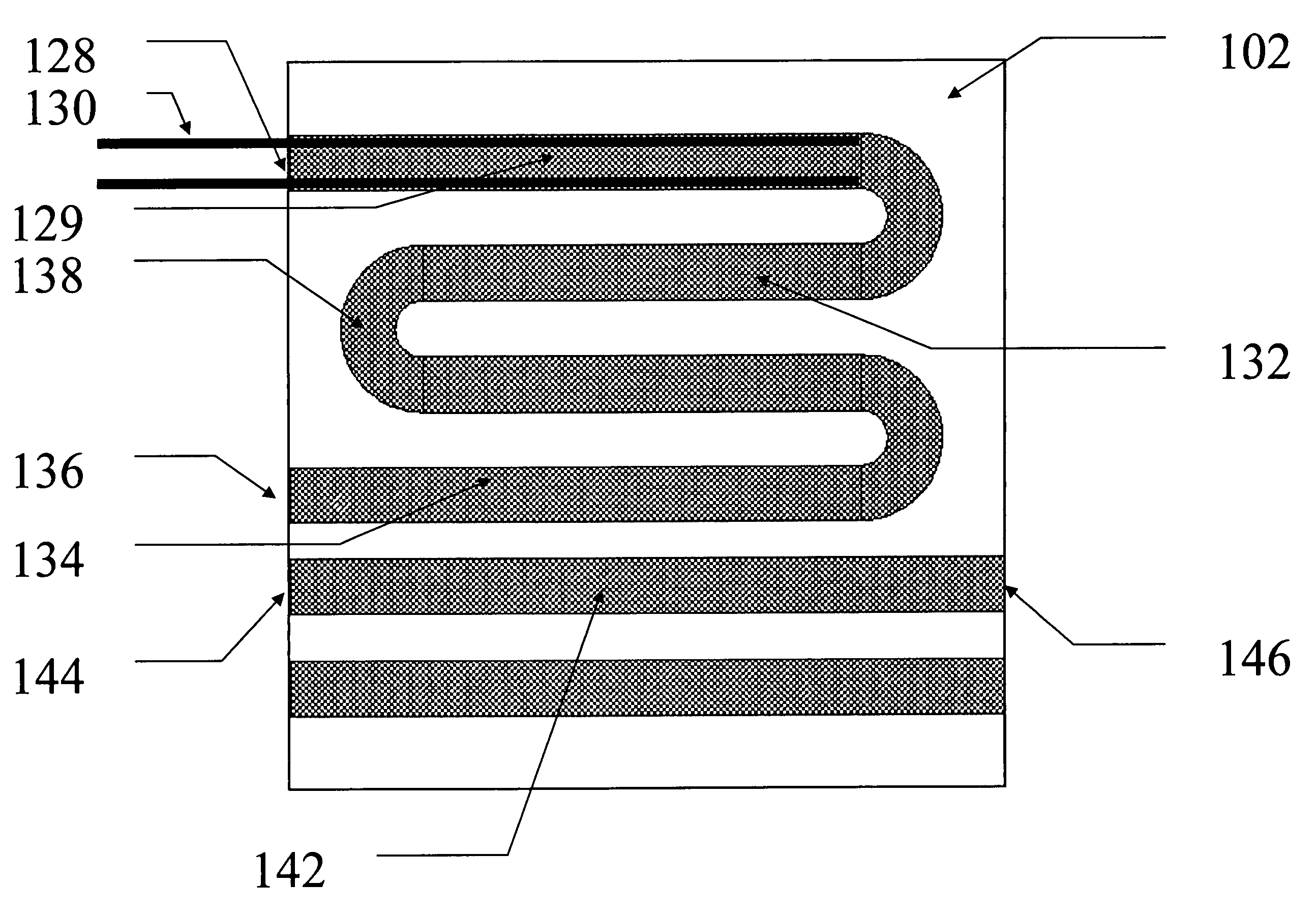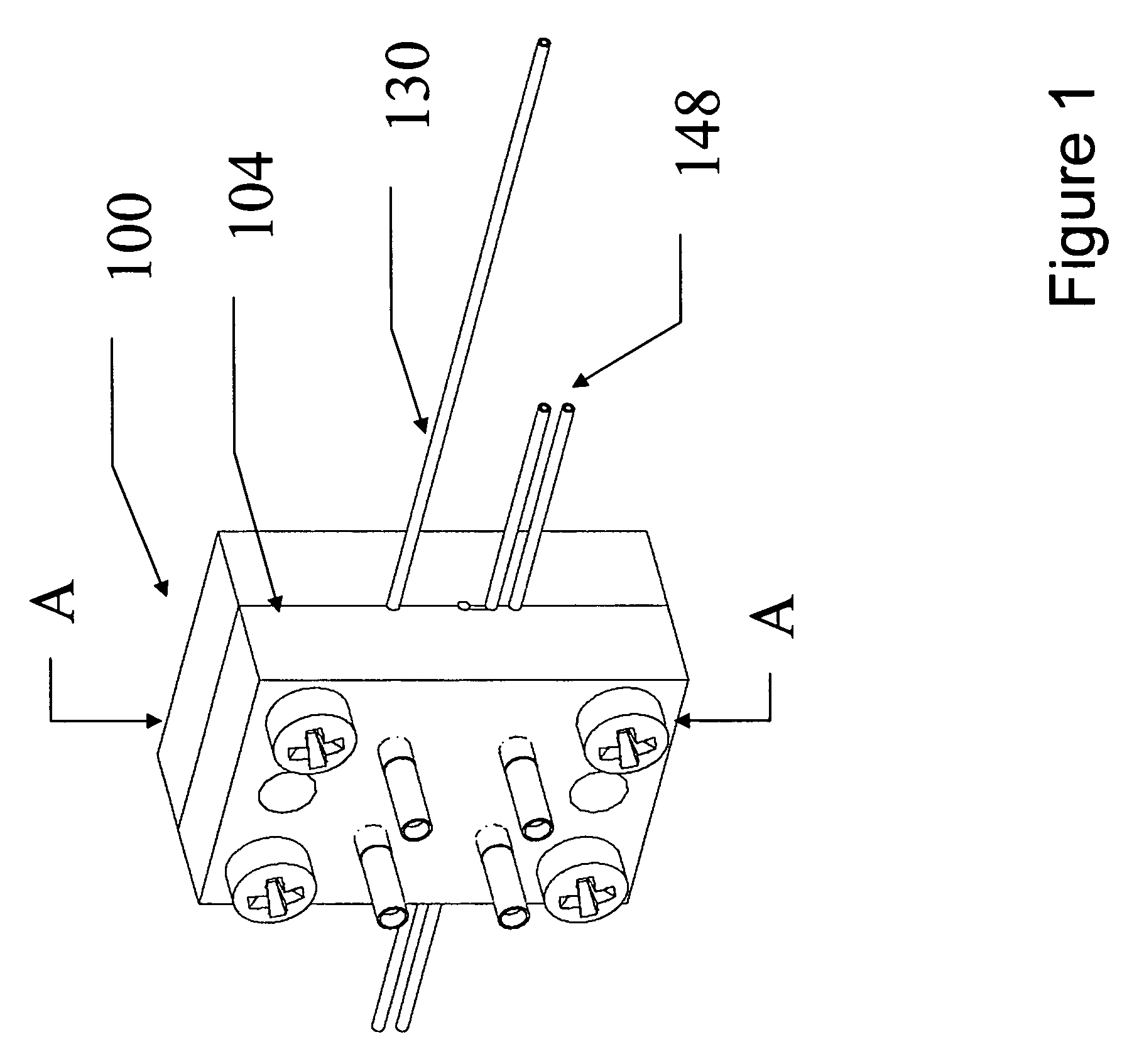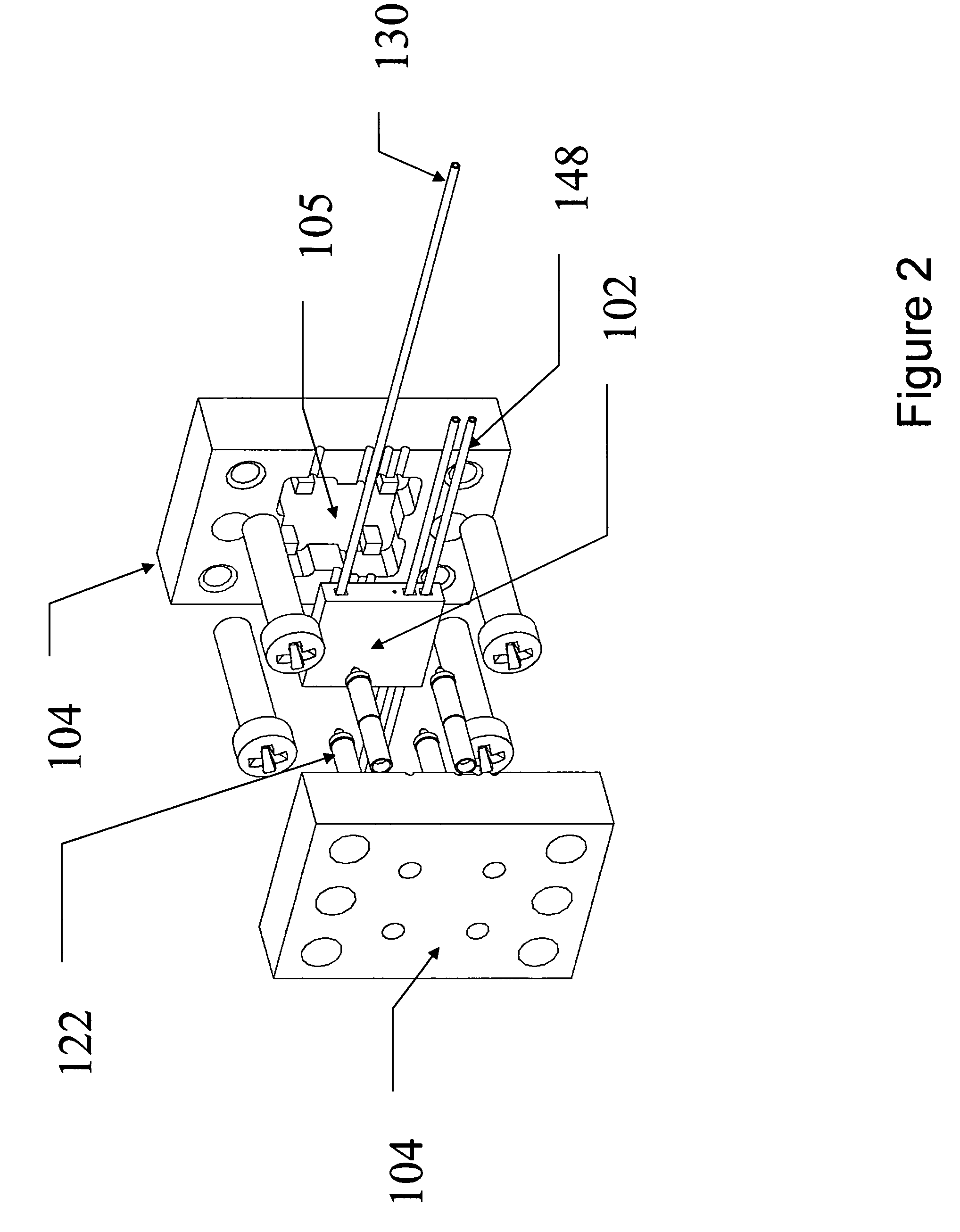High pressure capillary micro-fluidic valve device and a method of fabricating same
a microfluidic valve and high pressure capillary technology, which is applied in the direction of drawing-off water installations, lighting and heating apparatus, and domestic cooling apparatus, etc., can solve the problems of reducing the efficiency of the valve, and limiting the size of the valve, so as to improve the response time and energy consumption of the valve, improve the reliability and fabrication economy, and reduce the effect of thermal stress
- Summary
- Abstract
- Description
- Claims
- Application Information
AI Technical Summary
Benefits of technology
Problems solved by technology
Method used
Image
Examples
first embodiment
[0029]Referring to FIGS. 1 through 7, a freeze thaw valve 100 includes a valve body 102 (best seen in context in FIG. 2), disposed within a valve housing 104. The valve housing 104 defines a housing cavity 105 for containing valve body 102. Referring to FIGS. 4 and 5, the valve housing 104 includes a housing refrigerant inlet 106, a housing refrigerant vent 108, a working fluid capillary tubing inlet 110, a working fluid capillary tubing outlet 112, and at least one mounting feature 124.
[0030]Valve body 102, best illustrated in FIGS. 6, 7a and 7b, includes a refrigerant inlet 128, a refrigerant supply capillary tube 130 extending therefrom, an expansion chamber 132, a refrigerant vent channel 134 and a refrigerant outlet 136. Expansion chamber 132, which can be implemented in various forms as described hereinafter, is in fluid communication with refrigerant inlet 128 and refrigerant outlet 136. Refrigerant supply capillary tube 130 is disposed, e.g. adhesively bonded, into refrigera...
embodiment 1
[0044]Expansion chamber Referring to FIG. 7a, the valve body 102 may be designed with an expansion chamber consisting of a uniform cross-section channel between the refrigerant inlet 128 and outlet 136. The cross-section dimensions are made for the insertion of the refrigerant supply capillary tube 130 as illustrated in FIGS. 6 and 7a. In this illustrative embodiment the channel advantageously includes serpentine bends to facilitate longer channel length for heat transfer between the vaporizing refrigerant and the valve body 102 and to facilitate the accretion of solid carbon dioxide. The serpentine bends serve the function of flow restriction features 138 (and 140 of the embodiments of FIGS. 9–12), allowing the accretion of carbon dioxide to occlude the refrigerant flow.
embodiment 2
[0045]Expansion chamber Referring to FIGS. 8 and 9, the valve body 102 may be designed with a refrigerant supply capillary tubing conduit 129 in communication with an expansion chamber of smaller uniform cross-section (best seen in FIG. 9), with restrictive serpentine flow restriction elements (140a in FIG. 9), in communication with a refrigerant vent channel 134 disposed between the refrigerant inlet 128 and outlet 136. It should be appreciated that in a microfabricated structure according to the invention, the increasing non-uniform cross-section can be achieved in various ways such as by decreasing the total cross-sectional dimensions as in FIG. 9 or by decreasing the width or depth of an etch such as in FIG. 8.
PUM
 Login to View More
Login to View More Abstract
Description
Claims
Application Information
 Login to View More
Login to View More - R&D
- Intellectual Property
- Life Sciences
- Materials
- Tech Scout
- Unparalleled Data Quality
- Higher Quality Content
- 60% Fewer Hallucinations
Browse by: Latest US Patents, China's latest patents, Technical Efficacy Thesaurus, Application Domain, Technology Topic, Popular Technical Reports.
© 2025 PatSnap. All rights reserved.Legal|Privacy policy|Modern Slavery Act Transparency Statement|Sitemap|About US| Contact US: help@patsnap.com



